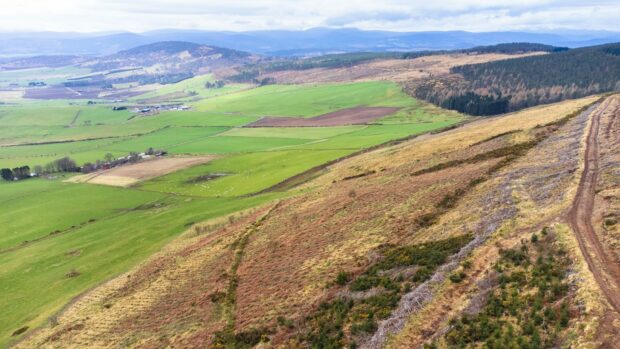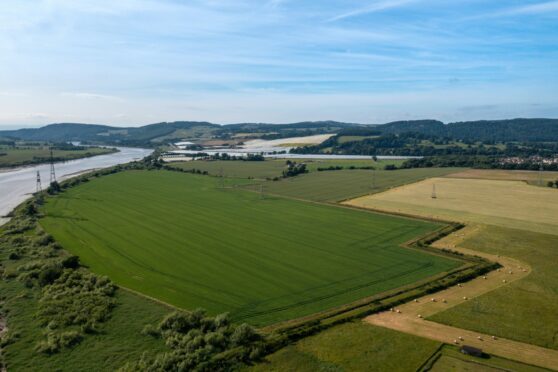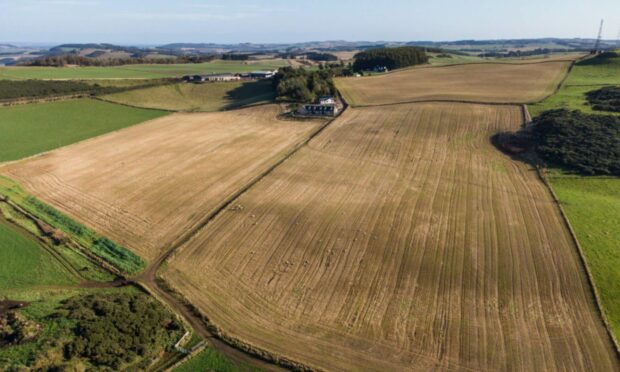A top end arable farm coming on to the market today could easily attract bids of 18-20% above the asking price.
The offers-over demand for a secondary arable/grazing unit is less dramatic but would still be likely to attract bids of 5-12% over the price that appears on the sale board.
Genuine top end properties don’t often come on to the market, of course, which is why demand is so fierce when they do, says Ian Hope, head of Galbraith Rural.
“We probably saw more movement at the high end of the market in Tayside in 2021 than I can recall for some years,” he said.
Localised
“This was due to individual circumstances rather than some emerging trend. Overall this year, we’re witnessing strong demand across all land categories and tight supply.
“We’re dealing with very localised markets, however, many different land types and, as a result, many different buyers and bidding influences.
“While the top end is always subject to pent-up demand, the secondary arable and better grazing land sector depends heavily on what the neighbour appetite is to buy land and expand. That’s always important.”

Challenged whether the asking price should be pitched a bit closer to final sale values than a 18-20% mark-up, Mr Hope said he was always careful not to set the asking price too high.
“It’s a very fine balance and you can definitely get it wrong,” he said.
“If you set too high an asking price and it puts potential buyers off from viewing, that’s a bad situation for a client.”
Diane Fleming, associate director of Strutt & Parker’s estates and farm agency, agreed that demand is still outstripping supply, with farmers continuing to make up the majority of buyers.
Shortage
“At the start of the year, we predicted that supply would recover close to pre-pandemic levels,” she said.
“However, there’s still a shortage of farms for sale. Only 7,500 acres have come to the open market between the first two quarters, which is still 40% lower than in 2019.”
Asked how potential sellers are reacting to current prices, she said some farmers were clearly taking advantage of the strength of the market.
“With political and economic uncertainty, the market remains volatile and susceptible to change,” she added.
“Farm commodity prices are up but input costs are rising. If, as predicted, interest rates rise higher than 2% by 2023, we may see a drop or stagnation in land values.
“Now may be the time to act.”

James Presly, director at Aberdeen & Northern (Estates) said he was expecting more farms and bare land opportunities to come on to the market soon.
“The increase in demand and values for plantable forestry land is the most significant shift in the land market in recent times, of course, driven by the rise of investors, high timber prices, competitive forestry grants, and carbon offset markets,” he said.
“While we are seeing continued rises in values in other land classes, including lower lying and better-quality pasture and productive arable land, these rises are not at the same rates experienced for hill land being sold for forestry planting.”
Impacts
As for the potential impact on the offering of farms for sale, due to rising energy costs and the food supply turmoil caused by Russia’s invasion of Ukraine, it is generally felt it’s too early for these factors to be influencing decisions.
“Cashflow difficulties won’t hit most farms until the end of the year,” said Mr Hope.
“Many, for example, bought this year’s fertilisers before price increases started.
“Farmers are effectively playing with bigger numbers this year, however, potentially getting more for their output but with inputs going up as well. That means having to finance the additional production costs, which is where we could see conversations starting about more people going into share farming or contract farming agreements in the future.”
